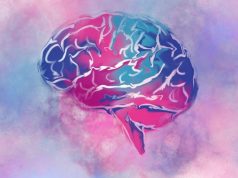Morphological differences seen in the primary somatosensory system
WEDNESDAY, April 25, 2018 (HealthDay News) — Patients with restless legs syndrome (RLS) have morphologic changes in the brain, which could be responsible for the sensory functional symptoms of RLS, according to a study published online April 25 in Neurology.
Byeong-Yeul Lee, Ph.D., from the University of Minnesota in Minneapolis, and colleagues used magnetic resonance imaging to assess morphologic brain changes in the somatosensory cortex and the thickness of the corpus callosum among 28 patients with severe RLS symptoms and 51 age-matched healthy controls.
The researchers found that there were morphologic changes in the brain somatosensory system in RLS patients, compared to controls. There was a 7.5 percent decrease in average cortical thickness in the bilateral postcentral gyrus (P < 0.0001) in patients with RLS. There was also an associated, substantial decrease in the corpus callosum posterior midbody (P < 0.008) where the callosal fibers are connected to the postcentral gyrus, which suggested altered white matter properties in the somatosensory pathway.
“Our results provide in vivo evidence of morphologic changes in the primary somatosensory system, which could be responsible for the sensory functional symptoms of RLS,” the authors write. “These results provide a better understanding of the pathophysiology underlying the RLS sensory symptoms and could lead to a potential imaging marker for RLS.”
Abstract/Full Text (subscription or payment may be required)
Editorial (subscription or payment may be required)
Copyright © 2018 HealthDay. All rights reserved.








